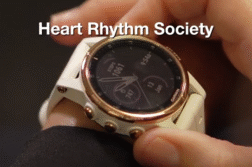SAN ANTONIO, Texas (Ivanhoe Newswire) – Magnetic resonance imaging, or MRI, uses a magnetic field to produce images of the inside of the body. Doctors use it to diagnose cancer, internal injuries, or heart disease. Now, new MRI technology is making it easier than ever before for patients to benefit from the screening.
If you’ve ever needed an MRI, you know how confining it can feel. Now, a new FDA-approved, full-body MRI is being used for the first time in the U.S. The Magnetom Free Max has the largest opening of any MRI, expanding access for patients with severe claustrophobia or obesity.
Director of Advanced Cardiovascular Imaging Research at The Ohio State University, Orlando P. Simonetti, PhD, explains “Not only can those patients not fit in a conventional MRI, but other imaging modalities like echocardiography, CT, or nuclear imaging are not as effective in these severely obese patients.”
Researchers and engineers at The Ohio State University are developing cardiac imaging techniques using the machine created by the medical company Siemens. It uses a lower magnetic field, a much better option for some cardiac patients.
“A lot of patients, now, that come in for cardiac MRI have implanted devices, pacemakers, defibrillators,” Professor Simonetti mentions.
The metal in implanted devices, like pacemakers and defibrillators, may distort the higher magnetic field of other MRI scanners, so technicians are sometimes not able to get clear images. The researchers say they’ve used new technology to boost the signal strength of the lower magnetic field, providing better pictures of the heart.
For comparison, today’s clinical MRIs usually have magnetic field strengths of 1.5 or 3.0 Tesla, which is the unit of measurement for magnetic fields. The new MRI has a strength of .55 Tesla.
Contributors to this news report include: Cyndy McGrath, Producer; Kirk Manson, Videographer; Roque Correa, Editor.
To receive a free weekly e-mail on medical breakthroughs from Ivanhoe, sign up at: http://www.ivanhoe.com/ftk
Sources:
https://www.dotmed.com/news/story/56736
MEDICAL BREAKTHROUGHS
RESEARCH SUMMARY
TOPIC: NEW MRI TECHNOLOGY: BETTER IMAGING FOR HEART PATIENTS
REPORT: MB #5069
BACKGROUND: Magnetic resonance imaging, or MRI, is a medical imaging technique that uses a large magnet and radio waves to look at organs and structures inside the body. A common misconception is that an MRI machine uses radiation to create the diagnostic image, but instead, it uses magnetic force and not radiation. An MRI is typically used to diagnose a variety of conditions, from torn ligaments to tumors and is very useful for examining the brain and spinal cord. During an MRI scan, patients lie on a table that slides inside a tunnel-shaped machine. Patients must stay still during an MRI. An MRI scan is painless, but the machine may make a lot of noise. Medical professionals perform about 30 million MRI scans per year.
(Sources: https://medlineplus.gov/mriscans.htm, https://www.envrad.com/facts-about-mris/)
LIMITATIONS: Since MRIs use a strong magnet, an MRI cannot be performed on patients with certain devices. The metal these devices can distort the magnetic field and corrupt the image quality. The devices that may affect the quality of an MRI scan include:
- Implanted pacemakers
- Intracranial aneurysm clips
- Cochlear implants
- Certain prosthetic devices
- Implanted drug infusion pumps
- Neurostimulators
- Bone-growth stimulators
- Certain intrauterine contraceptive devices
- Iron-based metal implants
An MRI may not be very effective in people with metallic objects such as bullets or shrapnel, surgical clips, pins, plates, screws, metal sutures, or wire mesh. People who are severely obese or have severe claustrophobia may also find it difficult to get an MRI.
(Sources: https://stanfordhealthcare.org/medical-tests/m/mri/risk-factors.html)
NEW TECHNOLOGY: New advances in MRI imaging is expanding access to the technology to people who had problems getting access before. The 0.55T MAGENTOM Free.Max could suppress the interference in the images and produce clearer images at lower field strength. The updated MRI also features the largest opening to date at 80 cm compared to the typical 60-70 cm. The larger opening can help with severely obese patients and those who are claustrophobic. Having the ability to produce clearer images at a lower field strength can also be advantageous for patients with medical devices that would interfere with MRIs before. Ohio State researchers who helped developed this new MRI say, “This is an important advancement for patients with cystic fibrosis, pulmonary hypertension, heart failure, COVID-19 and any other disease where we’re trying to understand the source of shortness of breath and evaluate both the heart and lungs. The air in the lungs cancels out the MRI signal at higher field strength; however, at lower field, there’s potential to see lung tissue more clearly with the MRI.”
FOR MORE INFORMATION ON THIS REPORT, PLEASE CONTACT:
Amy Colgan Eileen Scahill
(614) 425-0424 eileen.schahill@osumc.edu
If this story or any other Ivanhoe story has impacted your life or prompted you or someone you know to seek or change treatments, please let us know by contacting Marjorie Bekaert Thomas at mthomas@ivanhoe.com




